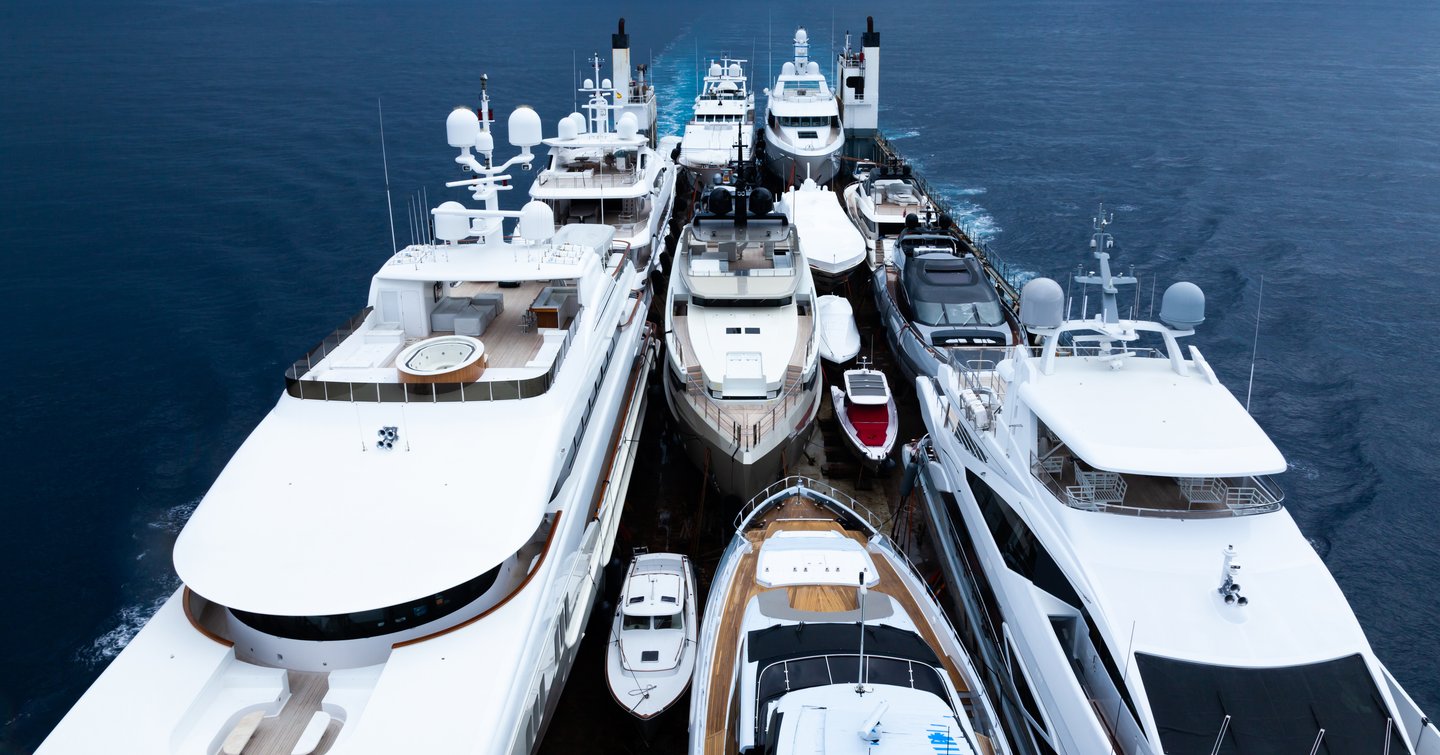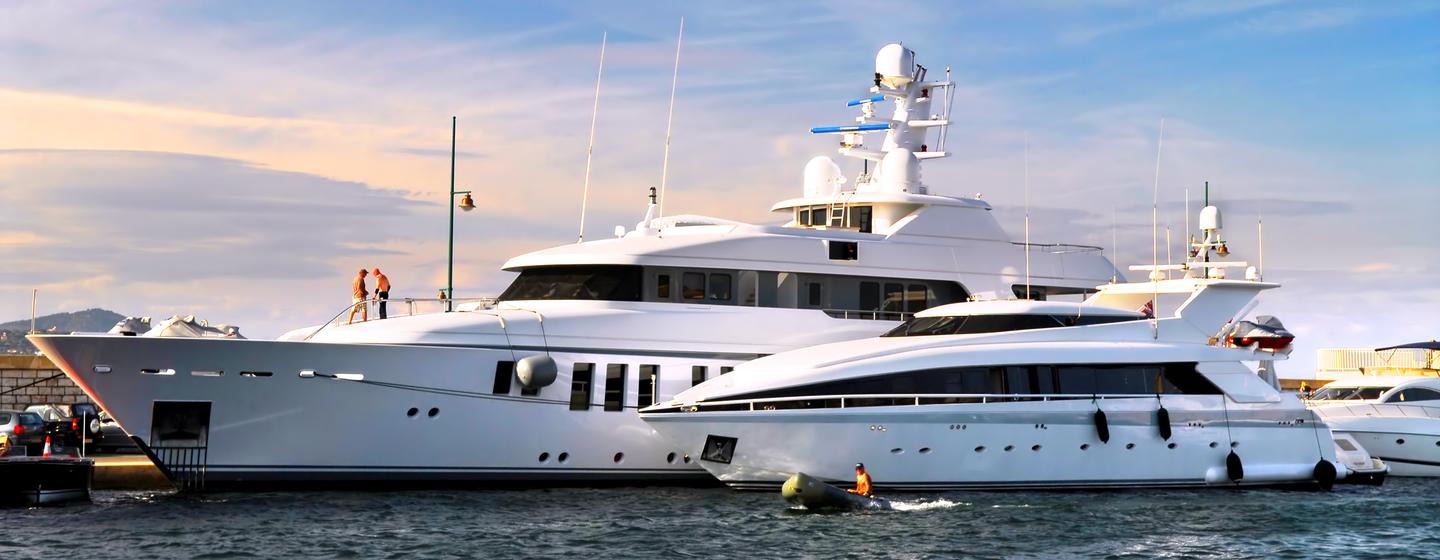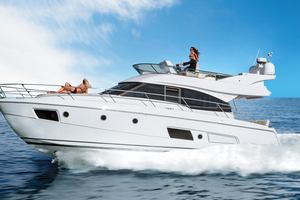At YachtBuyer, we've drawn the line at 24 meters (78.7 feet) in length. 'Vessels' under this length are classified as "boats," while those over 24 meters are designated "yachts." But why did we choose this specific cutoff?
The 24-Meter Rule
The 24-meter length is a widely recognized benchmark in the maritime industry. This length is not just a random number; it reflects the point at which a vessel’s capabilities, complexity, and usage often transition from that of a typical boat to something more luxurious and capable, a yacht.
At 24 meters, vessels typically offer more advanced navigation systems, larger living spaces, and increased range and performance. This size also usually requires more specialized crewing and maintenance, characteristics that are often associated with yachts rather than boats.
Boat vs. Yacht Comparison Table
| Attribute | Boat (<24 meters) | Yacht (≥24 meters) |
|---|---|---|
| Length Range | Under 24 meters (≈ 78.7 ft) | 24 meters or more |
| Typical Use | Recreation, sport, day cruising | Luxury cruising, liveaboard, long range |
| Crew Requirements | Often owner-operated | May require licensed crew (USCG licensed captain) |
| Accommodations | 1–2 cabins, limited amenities | Multiple staterooms, full galley, salon |
| Navigation Equipment | Standard GPS/fishfinder | Radar, autopilot, satellite comms |
| U.S. Regulations | Subject to USCG recreational rules | Subject to commercial or private yacht safety regulations |
| Insurance & Valuation | Lower premiums, market-based value | Higher premiums, luxury assets |

The Naming Game: Boat Builders and Yacht Branding
Interestingly, the boating industry doesn't always adhere strictly to size when it comes to naming conventions. Some manufacturers include 'yacht' in their brand names or model titles, even if their vessels are under 24 meters. This is often a marketing strategy, aiming to evoke the luxury and status associated with yachts. However, these vessels might still be categorized as boats under our 24-meter guideline, despite what the brand name suggests.

Personal Preference: When a Boat Becomes a Yacht
For many owners, the decision to refer to their vessel as a 'boat' or a 'yacht' often comes down to personal preference, regardless of size. Some boat owners with boats under 24 meters might refer to them as 'yachts' to emphasize their luxury, while others with larger yachts may simply call them 'boats' out of tradition or modesty.
This blurring of lines reflects the subjective nature of the terms and the personal relationship many have with their yachts/boats.

Special Cases: Fishing Yachts and Other Outliers
What about fishing yachts? The term 'fishing yacht' often applies to large, specialized sportfishing vessels. While some might argue that these are just 'boats' due to their utilitarian purpose, their size and level of outfitting often place them squarely in the yacht category, even if their primary function is far from leisurely cruising.
Merchant Shipping Notice (MSN)
Once a boat or yacht exceeds this 24-meter threshold, it must comply with stringent safety standards, including life-saving equipment, fire safety, and structural integrity requirements.
MSN 1858 (M) Amendment 1 outlines critical safety and operational regulations for vessels over 24 meters in length. The regulations also mandate that these larger vessels be operated by a qualified crew and undergo regular inspections to maintain certification.
While the notice primarily targets commercial vessels, it also affects private yachts over 24 meters, especially if they are used for charter. The 24-meter mark is the key point where these regulations come into full effect.
U.S. Regulatory Distinctions Around 24 Meters
| Regulatory Factor | < 24m Vessels | ≥ 24m Vessels | Description |
|---|---|---|---|
| USCG Documentation | Optional for pleasure use | Often required for charter/commercial | USCG documentation may be required for larger vessels |
| Licensed Captain (6-pack/100 ton) | Not required for private use | Required if carrying passengers for hire | Regulated under Code of Federal Regulations (CFR) |
| Safety Inspections | Minimal or self-managed | More frequent, USCG-inspected if chartered | Includes lifesaving and fire protection gear |
| Insurance Requirements | Standard recreational coverage | Custom coverage, often commercial-grade | Premiums scale with vessel complexity |
The Yachtmaster Qualification
The Yachtmaster qualification, introduced by the Royal Yachting Association (RYA) in the United Kingdom, has its origins in offshore navigation for recreational boaters, particularly those navigating the English Channel. Historically, the Yachtmaster was closely tied to vessels up to 24 meters in length—a benchmark that has long been regarded as the dividing line between a 'boat' and a 'yacht'. This distinction reflects the traditional view that vessels of this size represent the upper limit of what could be considered a yacht, a perspective that still holds relevance today.
The Yachtmaster qualification was initially developed to offer structured training and certification for recreational boaters who needed the skills and experience to safely undertake offshore passages.

The Beaujolais Run
One of the early inspirations for this qualification was the Beaujolais Run—a spirited race where participants would sail across the Channel to France to collect the first bottles of Beaujolais Nouveau wine. The 150 nautical miles from a safe haven distance criterion, a key component of the Yachtmaster certification was influenced by this challenge, as it represented the typical distance from England’s major sailing ports to the French coast.
As the marine industry evolved and began formalizing qualifications for skippers, the Yachtmaster served as a foundational standard. Although originally designed for recreational boating, it was naturally adapted to meet the growing needs of professional maritime qualifications, while still reflecting the 24-meter length as a key benchmark in defining yachts.
Examples of Popular Vessels Around 24m
| Vessel Model | Length (m) | Classification | Notable Features |
|---|---|---|---|
| Viking 75 Motor Yacht | 22.86 | Large Boat | Luxury features but recreational classification |
| Ocean Alexander 27R | 27.43 | Yacht | Expansive volume, requires professional crew |
| Hatteras M90 Panacera | 27.43 | Yacht | Full yacht amenities, USCG-compliant for charter |
| Sunseeker 76 Yacht | 23.6 | Large Boat | Luxury interiors, just below yacht threshold |
Ultimately, whether a vessel is a boat or a yacht can depend on more than just its length. However, by adopting the 24-meter rule, at YachtBuyer we have established a clear, consistent standard for our listings, for boats and yachts for sale, while acknowledging the nuances that come with naming conventions and personal preferences.
Summary: When a Boat Becomes a Yacht? 24-Meter Rule Explained
A vessel is typically considered a yacht when it reaches or exceeds 24 meters (approximately 78.7 feet) in length. This threshold is recognized across the maritime industry, particularly in professional and regulatory contexts. It marks a shift from smaller recreational boats to larger, more complex, and luxurious yachts.
Key Distinctions
Size: 24 meters is the industry benchmark for defining a "Large Yacht." Vessels below this size are usually classified as boats, while those at or above are often yachts.
Design and purpose: Boats are commonly built for day cruising, fishing, or sport. Yachts, on the other hand, prioritize luxury, long-distance cruising, and sophisticated amenities.
Regulatory impact: In many jurisdictions (including the U.S. and UK), vessels over 24 meters are subject to additional maritime safety codes, crewing requirements, and inspection standards.
Professional crewing: Yachts typically require trained crew or a licensed captain, especially for charter or international waters, whereas boats can often be owner-operated.
Market and prestige: While marketing may blur lines—many vessels under 24 meters are branded as "yachts"—the 24-meter threshold remains the definitive legal and practical dividing line in yachting circles.
Historical Context
The 24-meter distinction is rooted in professional seamanship standards like the Yachtmaster qualification, which historically applied to vessels up to this size. Over time, it became a symbolic and regulatory cutoff point between recreational boating and formal yachting.
Key Terms Overview
Yacht
A recreational vessel that is typically 24 meters (78.7 feet) or longer, designed for luxury, long-distance cruising, and often operated by professional crew. Yachts may be privately owned or chartered.
Boat
A general-purpose watercraft usually under 24 meters in length, used for fishing, sport, transport, or leisure. Boats are commonly owner-operated and have fewer regulatory requirements than yachts.
24-Meter Rule
A maritime industry standard that distinguishes between boats and yachts. Vessels measuring 24 meters or more are often considered "Large Yachts" and may be subject to different legal, technical, and operational classifications.
Large Yacht Code
A set of international safety and operational regulations (e.g., UK MCA LY3, LY4, or U.S. equivalents) that apply to private and commercial yachts typically over 24 meters in length.
Yachtmaster
A prestigious qualification issued by maritime authorities (e.g., the Royal Yachting Association in the UK), historically associated with vessels up to 24 meters. It certifies advanced seamanship and navigation competence.
Crewed Vessel
A vessel that requires or benefits from a licensed or professional crew, including a captain, engineers, stewards, or deckhands. This is common for yachts over 24 meters.
Tonnage
A measurement of a vessel’s overall internal volume, not weight. Larger yachts have higher tonnage, impacting regulatory compliance, crewing, and docking.
LOA (Length Overall)
The total length of a vessel from the tip of the bow to the end of the stern, including attachments. It is used to determine classification thresholds like the 24-meter rule.
Private Yacht
A vessel used solely for personal or family enjoyment, not for commercial gain. These may have fewer regulatory requirements than charter yachts, even when over 24 meters.
Charter Yacht
A yacht made available for commercial use (with or without crew), often requiring stricter regulatory compliance, inspections, and licensing, especially when over 24 meters.
USCG (United States Coast Guard) Documentation
A formal registration system for vessels in the U.S. that can apply to yachts and commercial boats, particularly those over certain size thresholds or used for hire.




